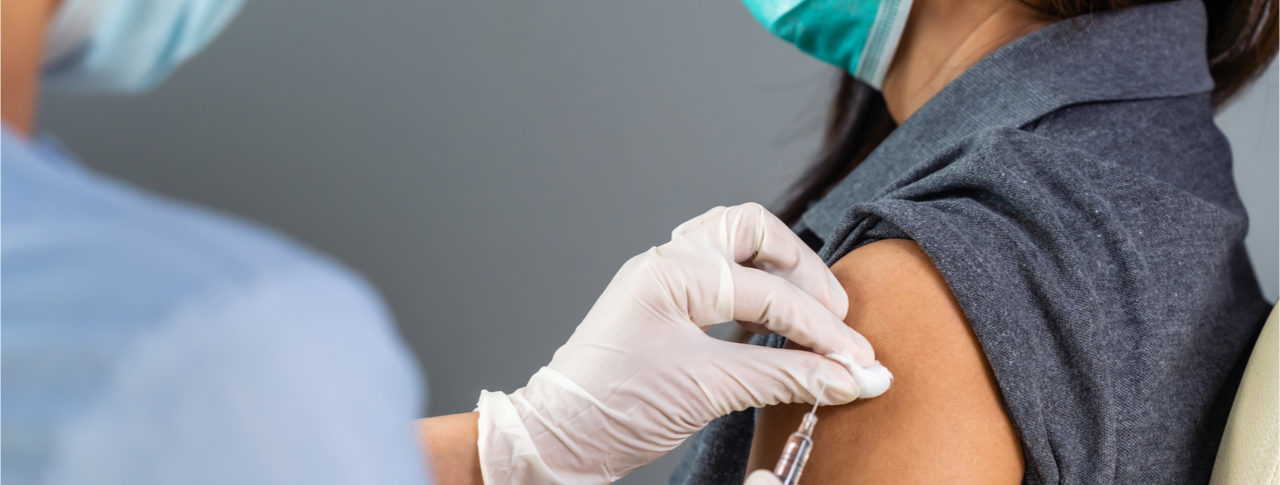Standing up for blind and partially sighted people on vaccines and testing
The Government and NHS are rolling our access to Covid-19 vaccines and community testing across the country. Thomas Pocklington Trust (TPT) and Sight Loss Councils (SLC) are working with other sight loss sector organisations to make sure that the needs of blind and partially sighted people are considered as part of this important work.
Testing
There are three types of Covid-19 testing that are now available for people across the UK:
- Home testing kits – these are kits that are sent to people in their homes in order for them to undertake a PCR (polmerise chain reaction) test. The individual posts this back for analysis and will get a result within a few days.
- Traditional PCR centres – these are traditional testing centres where people with Covid-19 symptoms can go to have a PCR test. This is then sent away for analysis and the individual will receive a result at a later date.
- Mass/community LFT testing centres – these are where LFT (lateral flow tests) are undertaken. This is a quicker test which will produce an “on the day” result, usually within 30 minutes.
We are focussed on making all three of these testing routes as accessible as possible for blind and partially sighted people:
- Home testing kits – we are working with the Department for Health and Social Care on a trial scheme involving blind and partially sighted volunteers to improve accessibility of the home testing kits. This includes looking at how easy it is to order a kit, delivering improved telephone and video conferencing support to enable the test to be undertaken in the home, and improving the accessibility of the packaging. This work was directly shaped by feedback from blind and partially sighted people through our Sight Loss Councils and our national survey on Covid-19 impacts.
- Testing centres (both types) – we have worked with sector partners to produce guidance on improving the accessibility of testing centres including venue types, training for staff, lighting, signage and availability of guiding support. We have met with senior officials from the Department for Health and Social Care to present our evidence and guidance and they are using it to strengthen their official approach to testing. this work was directly shaped by feedback from blind and partially sighted people and in particular the Merseyside Sight Loss Council.
Covid-19 Vaccine Rollout Advice (PDF, 405 KB)
Vaccinations
The roll out of the Covid-19 vaccination is now underway, based on the clinical priorities determined by the NHS. [Link to priorities list] Some blind and partially sighted people will feature at every stage of the priority list depending on age and other health conditions. Having a visual impairment will not automatically qualify an individual as being a priority to receive the vaccine.
Individuals will need to be able to attend appointments to receive the vaccination. Navigating independently to new places can be difficult for many blind and partially sighted people, so we have worked closely with sector partners to produce guidance for the NHS on making the vaccine rollout as accessible as possible for blind and partially sighted people.
Informed by feedback from our Sight Loss Councils we have particularly emphasised:
- Ensuring information sent to a visually impaired person is available in an accessible format such as large print and braille.
- Providing clear information on the location of the vaccine centre, such as public transport options.
- Making sure the venue has clear signage and good levels of lighting.
- Ensuring staff are trained to provide support to people with sight loss, such as providing verbal or sighted guiding where necessary.
Covid Testing Guidance for Blind and Partially Sighted People (DOCX, 712 KB)
Publication date: 22 December 2020

